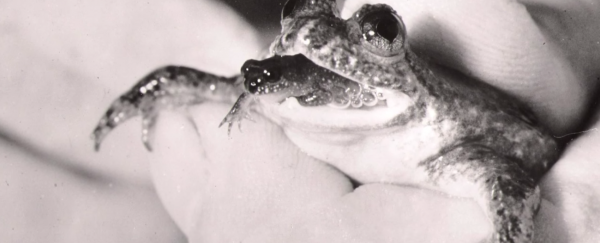
We all know by now that, sadly, a Jurassic Park-like dinosaur restoration is pretty unlikely. But, in 2013, Australian scientists did manage to bring an extinct species of frog back to life - albeit temporarily. And now they're hoping to do so more permanently in the future, as the latest episode of the University of New South Wales' (UNSW) 'Catastrophic Science' explains.
So what's so special about the amphibian? The gastric brooding frog was first discovered in the 1970s, when scientists realised it had a pretty fascinating reproductive strategy. Instead of letting its offspring develop in the water, the species swallows its fertilised eggs or newly hatched tadpoles, and turns its stomach into a uterus where they develop until they're fully formed frogs. When they're ready to leave the womb, the gastric brooding frog will projectile vomit its offspring out into the world. Yep, projectile vomits.
As gross as that sounds, the strategy got scientists pretty excited about all the incredible things they could learn from the species, such as new fertility strategies and treatments for stomach conditions such as ulcers.
But by the early '80s, the gastric brooding frog was driven to extinction by an introduced species of fungus, and the work was lost. Now an international team involving UNSW scientists is hoping to reverse that.
How exactly do you bring an animal back from the dead? As the video explains, it involves a process known as somatic cell nuclear transfer, which is where the DNA-containing nucleus of a cell is extracted from frozen remains of an extinct species, and then inserted into an egg cell from a living frog that's had its own DNA removed.
This newly fertilised cell then starts to develop into a tadpole of the extinct species. It's the same process that scientists used to clone Dolly the sheep, although it's a little harder with an extinct animal, because you're using an egg from a different species. As a result, the team so far has only been able to keep a gastric brooding frog embryo alive for three days. But they're getting closer than ever to bringing it back for good.
Watch the episode to find out more about how the scientists are bringing the gastric brooding frog back from the dead. UNSW's new Catastrophic Science series aims to highlight the science that's emerged from disasters, such as extinction or tsunamis. Subscribe here to see new episodes as they're released, and find out more about the world-changing research happening at UNSW Science.
